
things to do in Alberta during the winter months
UNEMPLOYMENT ON THE RISEEDMONTON'S JOB MARKET REALITIES




things to do in Alberta during the winter months
UNEMPLOYMENT ON THE RISEEDMONTON'S JOB MARKET REALITIES



It’s hard to believe that we are already celebrating the fifth year and 20th editionofLadiesCornerMagazine.Whatajourneyithasbeen!WhenIfirstset out on this path, my vision was to create a platform that would shine a spotlight on the incredible women in our community — their leadership, entrepreneurial spirit, and inspiring stories. Little did I know how far this vision would take us, and how deeplywe would connect with so many of you alongtheway.
This edition is special, not just because it marks a significant milestone, but because it continues to reflect the very essence of what we stand for: showcasing leadership, fostering entrepreneurial talent, and offering inspiration to women everywhere. Our readers, contributors, and the women whose stories we tell, have all played a vital role in making Ladies Corneratrustedvoiceforwomeninourcommunity.
In this 20th edition, we delve into topics that remind us of the strength, resilience, and creativity that women bring into every space they occupy.
Whether it’s through leadership in their careers, innovation in their businesses, or their courage in sharing personal stories that inspire others, womencontinuetobeapowerfulforceofchange.
AtLadiesCorner,wearenotjustamagazine—weareacommunity.Overthe past five years, we’ve had the privilege of featuring women from all walks of life who embody the spirit of growth, perseverance, and ambition. Each story we publish is a reminder that leadership comes in many forms, and entrepreneurship is not just about building businesses, but about building legacies.
As we celebrate this milestone, I want to express my deepest gratitude to everyone who has supported us along the way our readers, our contributors, and the women who have allowed us to share their stories. Yoursupportiswhatkeepsusgoingandfuelsourdesiretocontinuetobring youmeaningfulcontent.
Looking ahead, we remain committed to amplifying voices that need to be heard and providing a platform for the next generation of female leaders and entrepreneurs. Our work is far from done, and we are excited to see whatthefutureholds.
Thankyouforbeingpartofthisjourneywithus.Here’stothenextchapter!
Fromourfamilytoyours,haveaveryMerryChristmasandHappyNewYear!
Warmregards,

Publisher,LadiesCornerMagazine
www.ladiescorner.ca
EDITOR-IN-CHIEF
Tee Adeyemo info@lccmediafoundation.ca
CONTRIBUTING WRITERS
Lorrie Morales Stella Igweamaka
SENIOR EDITOR
Lorrie Morales
MARKETING MANAGER/ADVERTS
Miss Purple Media 587 974 9830
DESIGN DIRECTOR
John Nduaguibe jnduaguibe@gmail.com
PHOTOGRAPHY
Mileydi Cristancho
EMAIL info@lccmediafoundation.ca
WEBSITE www.ladiescorner.ca
This magazine or parts thereof may not be reproduced in any form, stored in a retrieval system, or transmitted in any form by any means - electronic, mechanical, photocopy, recording, or otherwise without prior written permission of the publisher.
Ladies Corner Canada Limited, Suite 3400, 10180101 Street, Edmonton, T5J 3S4



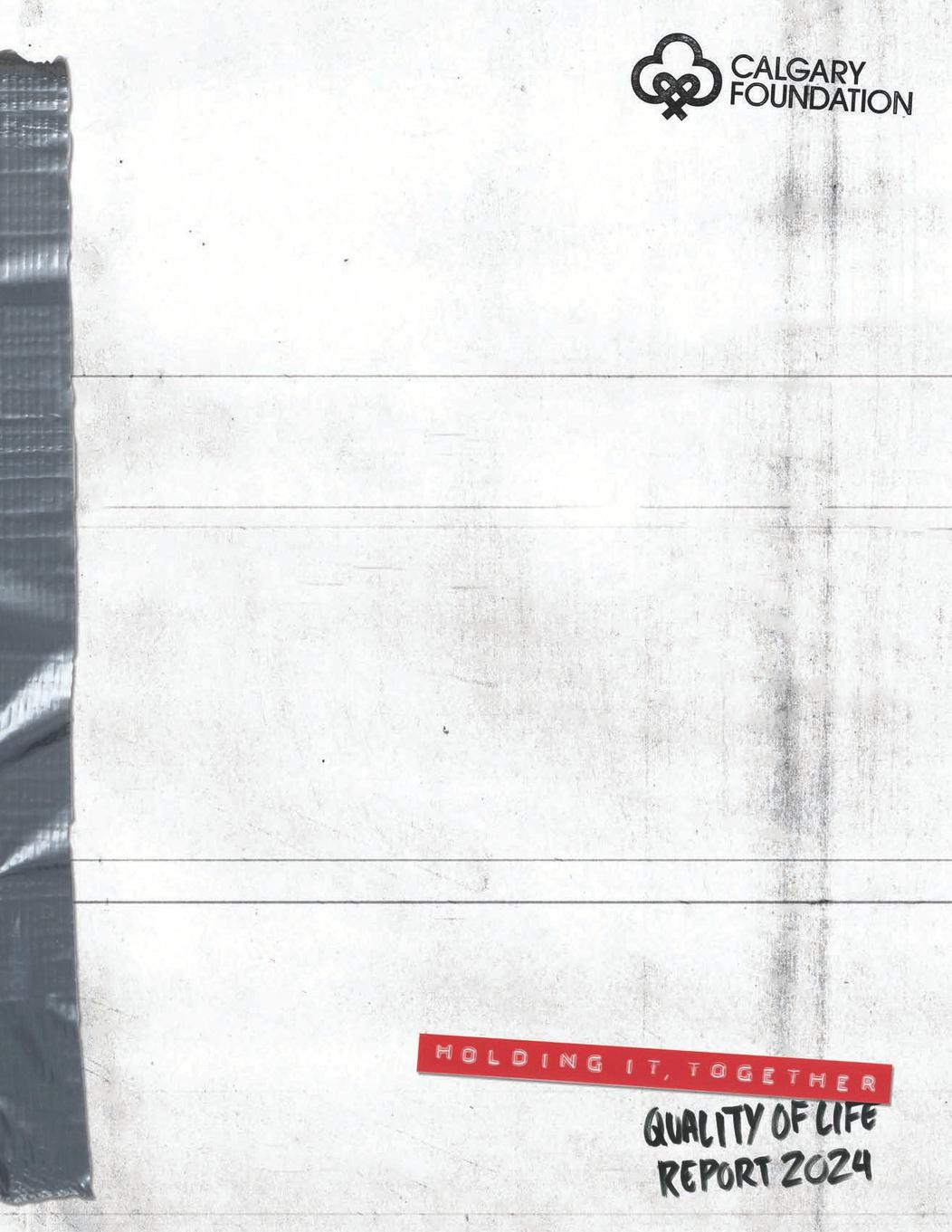




Funmi Ibikunle shares her knowledge of the Canadian Educational system.
First of all, the educational
framework is divided into three systems: elementary (kindergarten to grade 5-6); junior high or middle school (grades 6- 9) and high school (grades 10-12). Different provinces vary regarding grade level and milestones necessary for enrollment Some daycares or child providers are certified for early learning just as there are many career paths and options available for post secondary. In Canada, social promotion is based on age even though students are at different levels academically. For example, a parent may opt to keep their December born child from attending school in kindergarten until age 6. Many immigrants understand that a child will have had to achieve academic curriculum expectations before moving to the next level of education. In Canada, if a child finishes the school year from September to June, they are eligible to move to thenextlevel.
Provinces also govern their own education, as well as have their
own curriculum and assessment
methods. Even graduati
requirements for Grade 12 are different. For example, if a student needed 105 credits to finish school, he or she could gain credits from extra curricular, such as sports or trades. There are also equivalences that are administered from province to province. The admission pages of the universities or post-secondary institutions show this if a person is moving provinces to planning on attending school after graduation. Forexample,PhysicalEducation30 and Recreation Leadership in
A l b e r t a a r e e q u i v a l e n t t o Kinesiology Exercise Science in Ontario.
Regardless of the stipulations in each province, there are always six Core Curriculum areas that stay the same from kindergarten to Grade 12. These areas are:

Language Arts, Physical Education, Science, Social Studies, Art or Music, and Mathematics. The instruction is in English; however, if you live in Quebec or are in a French Immersion Program, students receive instruction in French or another second language if that school offers that program. If the program is ESL, the program is done as a second language; not the primary language of instruction. For example, if a student is trying to learn a second language it's important to know the distinction between Immersion and English as a Second Language. Some schools only offer full immersion from years or grades one to four if that language isdominantinthearea.
When parents are choosing schools, it's important to decide which Language Arts Program they want to be the primary language in order to support children in their learning. There are also various types of schools: Public, Catholic or Separate, Charter and Private schools which follow the Alberta Curriculum. Every provincial area has local authority and Edmonton Public School or Calgary Catholic School District are examples of this. The provincial government sets the “minimum number of hours of instruction” for each student to be exposed to per year

to complete the required syllabus. Independently funded schools, as well as homeschooling do not have to follow any syllabus even though many of them have their students take the provincial assessment exams in Grades three and six. These are used to determine if a child is below, at or above grade level according to the provincial curriculum. “Charter schools are able to deliver education in differentandenhancedways”such as teaching STEM in science to enhance the curriculum. If a parent is homeschooling, there are two methods of delivery. One is supervised by the local Authority and by following the rules, are eligible for some funding. Examples of this are the federal First Nations Schools or Francophone Schools. Other methods are strictly teaching what a parent wants.
There are so many choices, so it's important to do research before deciding which option is best for your child. The Educational Provincial websites, the local school district resources that have open houses, and looking at different schools, classes and teachers are all methods to determine your child's educational direction, even before they start school. Being a member of the Parent Teacher Association is another avenue to pursue.
The Edmonton Public School System and other systems show that there are “no two schools quite the same”. There are also alternate programs within the school system that could be based on art, athletics or even faith. Extra curricular activities are also a factor in choosing a school, as well as proximity to the school. The cost of private school might help a parent decide. Fraser Institute publishes a “report card” for each province that shows benchmarks of various grade levels. Visiting individual schools that one has narrowed down in the area is helpful.
Grading systems for individual schools is important to note. Letter and number grades determine which stream a student will enter in high school. Setting realistic goals for either trade school or post secondary schools give direction for a student. Some students may need extra support from a teacher, parent, tutor or guidance counselor Advanced placement is another level of streaming that students have access to To avoid frustration, parents from Nigeria, following the British system for example, should know that 65% in Social in Nigeria is a “B” in Canada. The final exam, is not the final grade determinant, as “in Canada, it's continuous

assessment.” This is based on individual or group assignments and other objectives from the curriculum. Parents need to be aware of this starting in Grade 9, so they are aware of student grades, if their child meets entry requirements for that next stream or after they graduate from high school. Supporting our children is necessary for them to do well in school and advance in a trade career like carpentry or even in the medical fieldas a doctor.Financial planning is also a concept to study in terms of aligning career goals with education Opening children's minds to the potential future is the door to open communication with them about what they want or do not want to do. Building that solid foundation from kindergarten through to grade 12 graduation is imperative Libraries, grandparents, YMCA programs, on-line programs or videos and some day homes or daycares are a few resources to start building that lifelong learning. We should “teach our children in the way they should go or guide them in the way they should go so that when they grow, theywillnotdepartfromit.”
This conversation was hosted by AspireHubCanada.
Dorothy Bentley
Income disparity between women
and men persists, but there are two career paths where women can earn a healthy income with expanding opportunities. The first is in the trades, which has numerous paths from precision technicians to heavy industrial work. The second field is the paramedic stream with skillswidelysought.
Some trades like hair stylist and cook are commonly held by women, but other trades, like millwright, have few women. In Alberta, Trade Secrets (https://tradesecrets alberta.ca) is thego-to site for information on available trades, the process for becoming an apprentice, how to find an employer, training, and job listings through the GovernmentofAlbertaJobBoard.
Check out NAIT, SAIT, Keyano College, Red Deer Polytechnic, and Northern Lakes College, among others. Once the first educational component is complete, an educational institution may provide a co-operative work placement. Institutions vary so it’s best to speak with their trades advisor before enrolling to ensure the program meetsexpectations.
One of the primary advantages of the trades is that apprentices earn

whiletheylearn.
Millwrights can earn between $24/hr to $29/hr as a first-year apprentice during their ten months of hands-on learning each year of the four-year training, avoiding educational debt. They typically lose their income while they are in school for two months of the year, but they may access income support or switch to part-time employment. Wages increase with each year of the apprenticeship. Millwrights may earn well over 100K once their training is complete, and many companies, particularly in the north, offer extensive benefits packages.
An alternate route is to first secure an apprenticeship with an employer and then register for the trade, and finally, attend school for the theoreticalcomponenteachyear. Alternatively, paramedics must attend school at the beginning of their career stream, but placements abound through Alberta Health Services as well as any number of institutions, companies, and in the farnorth.Thefirstrungontheladder is the EMT, or Emergency Medical Responder which takes about 40 weeks, or three semesters (SAIT). The next level, Primary Care Paramedic (PCP), is offered in
various configurations, including Emergency Services Academy’s 29 weeks, 792 hour program (https:// www.esacanada.com/pcp-primarycare-paramedic).
Holding an Advanced Care Paramedic (ACP) designation requires an additional two-year full-time program providing training in pharma-cology, advanced trauma care, childbirth, among other specialties (NAIT). ACPs work alongside other medical practi-tioners in clinics as well as in extremely remote areas of the country and provide inflight care for patients enroute to hospitals.
Women have many opportunities in Alberta and further afield to secure challenging and rewarding careers whether in industry, the public sector, or the para-medical field. Trade certifications are often recognized in other provinces and internationally, while paramedics must fulfill certifications specific to each province and country. The sky is the limit with trades and paramedics; and the earning potential will help women to achieve income parity so they may provide for themselvesandtheirfamilies.
DorothyBentleyisafreelancewriter dorothybentley.ca


Winter in Alberta is nothing short of magical. With its breathtaking landscapes, charming towns, and a wealth of outdoor activities, the province transforms into a winter wonderland. Whether you’re an adventurer or prefer cozy indoor experiences, Alberta has something for everyone to enjoy in the colder months. Here’s a list of 20 exciting things to do in Alberta this winter.
1ExploreBanffNationalPark
One of Canada’s most iconic destinations, Banff National Park becomes even more stunning in the winter. Visit Lake Louise, go ice skating, or simply enjoy the breathtakingmountainviewscoveredinsnow.
2SkiorSnowboardintheRockies
Alberta is home to world-class ski resorts like Sunshine Village, Lake Louise Ski Resort, and Marmot Basin. Whether you’re a pro or a beginner, skiing or snowboardingintheRockiesisamust-try.
3TakeaSleighRideinJasper
Jasper National Park offers cozy sleigh rides through snow-covered forests and along frozen lakes. It's a perfect activity for familiesoraromanticwinteradventure.
4ExperiencetheIceMagicFestival
Held annually in January at Lake Louise, the Ice Magic Festival is a world-renowned ice carving competition. Walk through intricate ice sculptures while enjoying the beautifulwintersurroundings.
5GoDogSledding
Dog sledding is a quintessential winter activity in Alberta. Experience the thrill of being pulled by a team of energetic

huskies through snowy trails in places like CanmoreorBanff.
6SoakinBanffUpperHotSprings
After a day of outdoor adventures, relax in the natural thermal waters of Banff Upper Hot Springs. Soaking in hot water while surrounded by snow-capped mountains is anunforgettableexperience.
7VisittheIceCastlesinEdmonton
The Ice Castles, located in Edmonton’s Hawrelak Park, are a stunning creation made entirely of ice. Explore this magical frozen fortress with tunnels, slides, and beautifulicesculptures.
8AttendtheSnowDaysFestivalinBanff
SnowDays is an annual winter festival in Banff featuring snow and ice sculptures, snowboarding demonstrations, and family-friendly activities. It’s a great way to celebrate winter in the heart of the Rockies.
9GoIceFishing
Alberta’s frozen lakes are perfect for ice fishing. Sylvan Lake and Lesser Slave Lake are popular spots where you can spend a peaceful day fishing through a hole in the ice.
10
Hike Johnston Canyon’s Frozen Waterfalls
Johnston Canyon, located in Banff National Park, offers a breathtaking winter hike. The canyon's frozen waterfalls and icy paths make for an unforgettablewinterexperience.
11TryCross-CountrySkiing
For a quieter adventure, head out on crosscountry skiing trails in Kananaskis Country, Canmore, or Elk Island National Park. It’s a fantastic way to explore Alberta’s natural beauty atyourownpace.
12EnjoyWinterCamping
Yes, winter camping is a thing! For the adventurous, pitch a tent or rent a cozy cabin in places like Kananaskis or Jasper National Park. Be prepared for cold nights, but the peaceful surroundingsmakeitworthit.
13VisittheCalgaryZoo’sZoolights
The Calgary Zoo transforms into a sparkling winter wonderland with over two million holiday lights during Zoolights. Enjoy family-friendly activities,hotcocoa,andamagicalatmosphere.
14GoSnowshoeing
Explore Alberta’s snowy landscapes by snowshoeing in places like Banff, Jasper, or Elk Island National Park. It’s a great way to enjoy the outdoors without needing any special skills or training.
15AttendtheEdmontonSkiClub’sWinterFest
The Edmonton Ski Club offers a variety of winter activities including skiing, snowboarding, and tubing. Their WinterFest event adds even more fun with live music, food trucks, and special performances.
16 Take a Stroll Through the Muttart Conservatory
If you’re looking for an indoor escape, visit the Muttart Conservatory in Edmonton. This botanical garden offers a peaceful retreat where you can enjoy warm temperatures and tropical plants,eveninthedepthsofwinter.

17ExploreAbrahamLake’sFrozenBubbles
One of the most unique natural wonders in Alberta, Abraham Lake is famous for its frozen methane bubbles trapped beneath the surface of the ice. This natural phenomenon creates stunningphotoopportunities.
18HittheIceforPondHockey
Pond hockey is a winter tradition in Alberta. Grab your skates, a stick, and a puck, and join the locals for a game of shinny on one of the many frozen lakesoroutdoorrinks.
19 A
Edmonton**
The Deep Freeze Byzantine Winter Festival is a unique event celebrating winter through art, culture, and outdoor activities. Enjoy ice sculptures, traditional winter games, and live performancesintheheartofEdmonton.
20 Take a Scenic Drive on the Icefields Parkway**
The Icefields Parkway is one of the most beautiful drives in the world, and it’s even more magical in the winter. The route between Banff and Jasper offers jaw-dropping views of snow-covered peaks,frozenwaterfalls,andglaciallandscapes.
Whether you’re looking for adventure, relaxation, or festive fun, Alberta offers a wealth of winter activities to enjoy. So bundle up, embrace the season, and make the most of Alberta’s winter wonderland!

Hagir Sail, a community leader in Calgary,
discusses the complexities of gender roles, shifting dynamics and the impact of income distribution. What are the roots of intimate partner violence? Delving into the intersection of religion and IPV, Hagir challenges misconceptions and emphasizes the role of faith leaders in dispelling them. Hagir currently works as a community facilitator and works in vibrant communities doing anti-racism work as well as organization governance. Hagir states that poverty is not just about having no money, but encompasses other related issues connected to emotional and physical violence.
When immigrants with black or African backgrounds move to the Western world, gender roles shift and dynamics change culturally, financially and relationally. Traditional roles become challenged with child benefits and the need for men to be involved in the various household roles and child rearing practices. Many people think that IPV is violence, but “you can touch on what actually happens in terms of emotional, financial, verbal initiates partner violence… before it actually gets to the point where it's physical.” Hagir states that belittlement is one of the more notable signs leading to violence, but gaslighting and bullying about spending habitsarealsoprevalent.
Resources and support for women from all cultures are available. Most of the religious practices are affected culturally by IPV. Excuses are made for behaviors and “people are shrouded under religion.” Many of the communities Hagir works with are faith-based and if pastors or imams speak, people listen. It is important to find religious leaders who are willing to address poverty or homelessness to find their stances on various issues. Education regarding gender relations and family structure workshops may be needed. Community gatherings or service providers may also benefit the conversations regarding making changes personally and orcommunitiesasawhole.
Research has shown that it “takes almost ten years for an immigrant of any background… to start comprehending injustices, racism and discrimination and systemic issues.” Social media could play an integral role in communication and this could be an opportunity for those conversations with people in the community who are trusted – elders. Talking about loneliness, stress and hardships is beneficial. Hagir shares that there is a Ladies'NighteverymonthintheSudanesecommunityto helpwiththat.
Financial difficulties are also a factor in relationships and many children become the brunt of that stress. Pride, overachievement and justification are all detriments when it comes to asking for help. Connections with the African Caribbean and Black communities are there to support those who are struggling. Adapting to the “way the system functions” is something that needs to be learned by sharing knowledge, accessibility and safety to speak and be heard. Financial and economic empowerment is important. We also need a system in Canada that reflects all peoples. By giving accessibility to jobs and making things more equitable, people could have more financial stability, which in turn would reduce theintimatepartnerviolence.
Housing, employment and positive mental health are needed so people can provide for themselves. Community leaders, religious leaders, and government policy makers need to have conversations and change the way services are provided. Needs assessments are very Eurocentric; however, when the policy makers, CEO's and the government collaborate with community, the generational work can begin to build a system that will help stop IPV. Hagir states that “we need to start looking at how to create protocols and policies that alleviate the oppressions and give the rights,” and hold thoseaccountableforthatshiftorchange.
This was a conversation by Africa Centre Intimate Partner Podcast series.

Funke Smith is the Founder
and CEO of SkillCity Institute. She is dedicated to empowering vulnerable and underrepresented communities by enhancing their skills, aiming to improve access to higher-quality employment opportunities. In her recent appearance on Ladies Corner with Tee, she discussed the urgency of her work in light of the prevalent issue of low-income jobs in Edmonton. Through SkillCity Institute, Funke focuses on upskilling individuals, particularly within Black communities, to support socio-economic growth and resilience.
Please tell us a little bit about yourself.
I'm Funke Smith, a Career Strategist and Social Innovator. I'm passionate about unlocking and maximizing humanpotential.Asthefounderand CEO of Skillcity Institute, my work is focused on empowering individuals with future-ready skills, resources, and opportunities to pursue highskill high-wage in-demand jobs that opensdoorstoeconomicprosperity. I'm thankful to have had the opportunity to pursue an interdisci-plinary career trajectory, which has exposed me to several sectors of human endeavor and helped to shape my
worldview and deepened my appreciation of the power of human potential. In this, I find my calling, my passion,andmyvocation.
Can you tell us the inspiration behind starting Skillcity Institute and what motivated you to focus on developing future skills for children, youth, andyoungadults?
The inspiration for Skillcity Institute came from observing systemic gaps and inequities in the Canadian socioeconomic fabric. As someone deeply embedded in the skilling and training ecosystem, I noticed persistent barriers preventing talented young people from accessing opportunities, particularly in STEM fields. I saw an urgent need; an economy with a leaking talent pipeline and massive waste of human capital with many young people falling through the cracks of the education system, unable to reach their full potential. It was that sense of urgency that compelled me to create Skillcity Institute in 2015, with a mission to curate pathways to economic mobility for equitydeserving families by empowering the youth with future-shaping skills and support systems they need to access lucrative careers in STEM and high-skilled occupations I believe

that every individual has within them a particle of creative force and an innate intelligence and all they need is a champion. Our role is to help them unlock this potential and transformitintotangiblesuccess.
Howdotheprogramsofferedby Skillcity Institute bridge the gap between education and realworldcareerpossibilities?
Skillcity offers a range of youth empowerment and skills training programs through our STEM & Career Exploration Lab (STEMCEL) in Edmonton. STEMCELis a careerskills and talent incubator offering immersive experiential learning and skill-building opportunities that connect academic learning with practical real-world applications With a variety of programs tailored to learners at different levels; such as Youth After-School Activities, Industry Exploration Trips, Career & Technical Education, STEM Heroes+ Mentoring, Youthpreneur, and Virtual Reality Job-Shadow & InternshipOpportunities.
We forge collaborations between educators, policymakers, businesses, and community stakeholders to create real pathways to success. Our programs focus on developing both technical STEM skills and essential meta-skills – like creativity,

empathy, curiosity, and communication – that are crucial for workplace success. This dual approach ensures our participants aren't just prepared for jobs; they're prepared forlife.
Whataresomeofthekeyfuture skills that you believe young people should be focusing on in today's rapidly changing job market?
In today's dynamic economy, we emphasize what we call 'agile skills' –those uniquely human capabilities that enable adaptability regardless of context. These include creativity, critical thinking, complex problemsolving, and emotional intelligence. Beyond these foundational skills, we encourage young people to develop 21st century skills such as Digital
l i t e r a c y a n d t e c h n o l o g i c a l
c o m p e t e n c e , S T E M - r e l a t e d analytical skills, Entrepreneurial mindset, Adaptability and agile thinking, Collaborative problem-
s o l v i n g a n d C r o s s - c u l t u r a l communication
These skills are paramount because
they're transferable across industries and remain valuable as technology evolves. We're not just preparing young people for existing jobs; we're equipping them with the adaptability to thrive in roles that haven'tevenbeencreatedyet.
How has the response from the community in Edmonton and b e y o n d b e e n s i n c e y o u launchedSkillcityInstitute?
The response has been incredibly affirming. Since our founding, we've successfully served over 4,000 individuals from diverse backgrounds Our empowerment initiatives have become a beacon of hope and opportunity for many young people facing barriers due to
racial discrimination, poverty, disability, gender, immigration status,andotherchallenges.
What's particularly encouraging is the strong partnerships we've built with various stakeholders – from educational institutions to businesses and community organizations. We're now working with groups like the Alberta Black Stakeholders for Social and Economic Collaborative (ABSSEC) on initiatives that extend beyond skills development to address broader c
housing and community wealthbuilding.
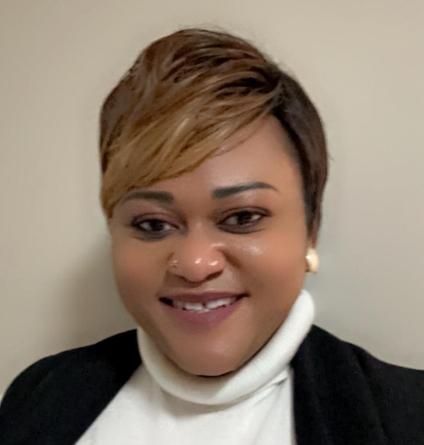
In your experience, what are the biggest challenges young people face when trying to align their education with future career opportunities, and how does Skillcity Institute help overcomethesechallenges?
One significant challenge is the disconnect between traditional education and the rapidly evolving demands of the job market. Many young people, especially those from underrepresented communities, face multiple systemic barriers such as limited exposure to STEM career possibilities, lack of visible role models in high-growth industries, financial constraints affecting educational choices, limited access
to professional networks, and several other cultural and social barriers.
At Skillcity, we address these challenges through our comprehensive approach We provide practical learning experiences, connect youth with diverse industry mentors, and create alternative career pathways. For instance, many immigrant youth don't consider skilled trades as viable careers due to different cultural perceptions. We work to reshape these narratives by highlighting the rewarding and lucrative nature of these professions in Canada in variety of emerging fields.
Could you share a success story or highlight a particular program at Skillcity Institute that has had a significant impact on a participant's life or careertrajectory?
While maintaining privacy, I can share that one of our most impactful initiatives has been our tailored 1on-1 career coaching. This service has transformed the trajectory of numerous individuals who initially saw limited possibilities for their futures For example, we worked with a young lady, a new immigrant. She came to us feeling disconnected from the education system and had lost confidence in their ability to succeed in Canada. Through our coaching and mentoring, she discovered her passion for technology, received mentoring from one of our industry mentors; she subsequently secured an internship that led to a high-paying job as an Analyst in a local tech company. Her story remarkably exemplifies our mission of not just providing skills, but creating genuine pathwaystoprosperity.

How important is it for young
p e o p l e , e s p e c i a l l y f r o m
underrepresented comm-
unities, to have access to programs like those at Skillcity Institute, and what role does inclusionplayinyourwork?
Access to empowerment programs like ours is absolutely crucial for building an equitable society. Even though STEM fields provide exciting, well-paying, in-demand careers, women and most minorities in Canada remainunderrepresentedin these areas This isn't just about individual opportunity – it's about collective progress and building a prosperousfutureforall.
Inclusion is at the core of everything we do at Skillcity. We believe diversity in thought, opinion, and collaboration is essential for b u i l d i n g s t r o n g t e a m s a n d
i n s t i t u t i o n s . O u r m a n d a t e specifically prioritizes addressing the under-representation of historically excluded individuals in STEM fields by removing existing barriers to participation This approach creates a ripple effect that p o s i t i v e l y i m p a c t s e n t i r e communities by fostering empathy, equality, and shared economic prosperity.
W h a t a r e s o m e o f t h e i n n o v a t i v e o r e m e r g i n g industries that you believe children, youth, and young adults should be paying attention to as they think about theirfuturecareers?
Whileweencourageyoungpeopleto explore various pathways, we see significant opportunities in highgrowth fields like Advanced technology and artificial intelligence, Green technology and sustainable industries, Digital transformation and cybersecurity, Advanced
manufacturing and robotics, H e a l t h c a r e t e c h n o l o g y a n d biosciences, and Skilled trades with technologicalintegration.
However, we emphasize that success in these fields requires more than technical knowledge. We're focused on raising what we call 'Agile-Skilled Professionals' –individuals who not only provide s
ical leadership but are also intellectually curious, socially conscious, and capable of creating collaborative solutionstosocietalproblems.
As a leader and entrepreneur, what have been some of the personal challenges and successes you've encountered w h i l e b u i l d i n g S k i l l c i t y Institute, and how have you navigatedthem?
Building Skillcity Institute has been both challenging and deeply rewarding. One of the main challenges has been addressing systemic barriers while building sustainable programs that create lasting impact However, these challenges have been balanced by successes, such as watching our participants discover their potential andachievefeatstheyneverthought possible.
What's helped me navigate these challenges is staying true to our founding principle – believing in the infinite potential within each individual. Every success story, every young person who discovers their path, reinforces our mission and drivesustoexpandourimpact. What advice would you give to parents who want to help their children develop future skills and prepare for the jobs of tomorrow?
I encourage parents to foster curiosity and creativity in their
with Funke Smith
children. Focus on developing both technical and human skills. It's important to: encourage hands-on learning and experimentation, support interest in STEM activities and creative problem-solving, help children develop resilience and adaptability, expose them to diverse career possibilities early, nurture t h e i r n a t u r a l t a l e n t s w h i l e challenging them to grow, and help them understand that learning is a lifelongjourney
Remember, the jobs of tomorrow may not even exist today, so developing adaptable, creative thinking is more valuable than focusing solely on specific technical skills.
Looking ahead, what are your future goals for Skillcity Institute, and how do you envision the organization growinginthecomingyears?
Our vision for the future is ambitious yet focused. We aim to expand our reach while deepening our impact. This includes: Strengthening our STEM & Career Exploration Lab model, expanding our programs to r e a c h m o r e u n d e r s e r v e d communities, developing new partnerships with industry leaders, c r e a t i n g m o r e p a t h w a y s t o economic prosperity through education, employment, and entrepreneurship, and building stronger support systems for familiesfacingbarriers.
We envision a future where every young person, regardless of their background, has access to the skills, resources, and opportunities they need to build enriching careers and contribute to thriving communities. Our goal is to continue being a catalyst for transformative change in Alberta'sskillingsectorandbeyond.

In Amiskwacîwâskahikan, also known as Edmonton, the job landscape is shifting in ways that reflect both economic trends and the resilience of its people. This city, renowned for weathering harsh winters and economic ebbs, has always managed to rebound, but recent job statistics cast a shadow on what the future might hold. According to Statistics Canada's August 2024 labor survey, Edmonton's unemployment rate reached 8.6% and by September, crept up to 9%, rankingamongthehighestinmajorCanadiancities.
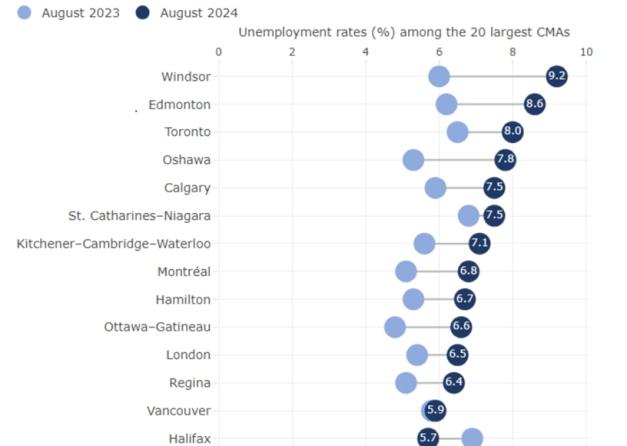
Edmontonians are no strangers to economic challenges, yetcommunities across thecityarefeeling theweightofthisuncertainty.
Take Sarah and Michael, a young couple raising their kids in northwest Edmonton. I occasionally run into them at the Booster Juice recreation center in Terwillegar. Michael, who was recently laid off from his oilfield job, reflects on how unpredictable the past year has been. “With Sarah's retail hours cut, we're

barely managing to make ends meet. We're just trying to keep the lights on and food on the table,” he shares, underscoring the struggles faced by many across the city.
The impact is far-reaching. Young graduates are struggling to find entry-level positions, seasoned professionals are dealing with sudden layoffs, and newcomers and immigrants who make Edmonton their new home find themselves facing a challenging job market. Edmonton'sonce-booming energysector, while still essential, has seen significant layoffs due to fluctuating oil prices. Retail, hospitality, and even tech sectors once considered stable have slowed hiring, or in some cases, cut jobs altogether. Like Sarah and Michael, many Edmontonians are exploring new income avenues or furthering their education to remain competitive. In July 2024, TurboTax-parent Intuit, closed its Edmonton office and laid off 1,800 employees, or 10% of its workforce, as the company leaned into AI-powered tax preparation software and other financial products underscoring the role of layoffs in the city's rising unemployment.
While the government has promised support through job and re-skilling programs, many residents feel the struggle is ongoing. “It's tough out there,” says Tolu, a resident from northeast Edmonton. After losing his job, he turned a knack for furniture assembly into a small business and has advertised his services through his community's social media groups. “This way, I can at least keep some income coming in and use a skill I already have,” he explains, highlighting the inventivewayspeopleareadaptingtosurvive.
Thought leaders beyond Edmonton have also recognized this national challenge. Claudia Hepburn, CEO, Windmill Microlending recently wrote a piece titled “Having Immigrant Engineers and Physicians

Driving Ubers considerabl Canada's skilled productively loans to he purchasing necessary frustrations of Canada wit p y themselvesunderemployed.
The barriers keeping these skilled workers from entering their respective fields are complex, and the question of why remains prominent. Some contributing factors to Edmonton's high unemploymentrateinclude:
1. Population Growth: Alberta's influx of newcomersmaybeoutpacingjobcreation.
2. Seasonal Fluctuations: Unemployment tends to rise during summer before people return to work in the fall and winter.
3. Skills Mismatch: There's a shortage of skilled workers for higher-level positions, while entry-level roles are highly competitive.
Alberta Central's chief economist, Charles St-Arnaud, recently explained in a feature article that although Alberta created around 50,000 new jobs over the past year, this momentum has slowed due to higher interest rates and a sluggish national economy. He pointed to the increase in newcomers, particularly from other provinces, such as Ontario and British Columbia as a reason behind the current job strain. “We're just not growing fast enough or creating jobs fast enough to absorb the increase in the labor force,” henoted.
Amid these challenges, the community's entrepreneurial spirit shines. People like Tolu are building small businesses from hobbies or side gigs, bringing hope, financial relief, and a sense of agency. Some Nigerian and Filipino communities in Edmonton are finding creative ways to build community wealth by tapping into informal skills to supplement their current incomes. From pastry making to cleaning and babysitting, they are offering these services within
to address the crisis, suggesting reductions in LMIA permits for Temporary Foreign Workers in industries with high local unemployment, and increased investment in public housing to support those struggling with both job and housing security. Still, some feel that long-term planning is essential to creatingsustainablechange.
Alberta's Jobs Minister, Matt Jones, recently commented on these statistics, framing them as temporary challenges. “National drivers, such as high interest rates and high national immigration, are contributing to temporarily higher unemployment,” he said. “These figures are temporary . . . despite this recordhigh migration, unemployed Albertans tend to find jobsmorequicklythantheirprovincialcounterparts.”
Federal-level changes are also providing a glimmer of hope. This year, the government imposed limits on study permits for international students and introduced plans to restrict applications for lowerwage temporary foreign workers in regions like Alberta,wheretheunemploymentrateexceeds6%.
In the meantime, Edmontonians hold tightly to hope, many hopeful that the city's spirit of resilience will once again carry them through, paving the way for a more diversified and sustainable job market in the yearstocome.
Stella Igweamaka holds an MBA from the University of Lagos in Nigeria and is proud to call Amiskwacîwâskahikan (Edmonton) her home. She is passionate about using research and storytelling for impactful change and was recently featured on CBC News for her work with Black Canadian Women in Action on the adultification of Black girls in Canada. You can find more of her work on www.stellaigweamaka.com
bytheYoruba


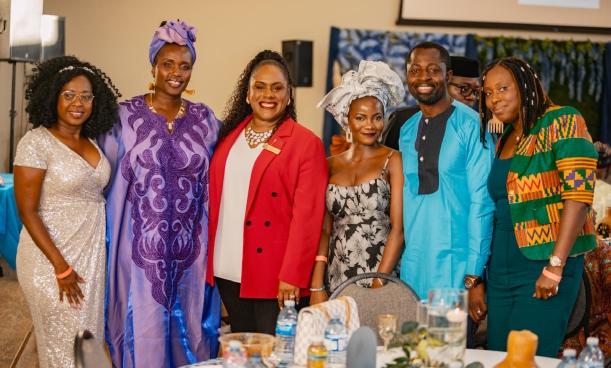



Al i s o n C l a r k e i s a n
Edmonton author and C a n a d a ' s n a t i o n a l treasure. She enjoys painting and drawing. Alison has taught creative writing classes, and is a spoken wordartist.SheistheauthorofThe S i s t e r h o o d T r i l o g y – T h e Sisterhood, Book One, being a young adult fantasy novel about Oppie, a sorceress' daughter, and her best friend, Aurie, who is a dragon, and the journey they go on tosavetheuniverse.
Alison won the award 2016 Writer Of The Year by Diversity magazine for The Sisterhood. The second book in the series is Racine which continues the magical odyssey. In this book, Racine, the 19 year old woman protagonist, goes on a fantastical odyssey from the Library of Congress. She discovers her mystical beginnings and the power of the written word. Book Three of The Sisterhood Series, Circle, was released with great reviews. Alison believes that the stories we tell ourselves are important Alison enjoys writing
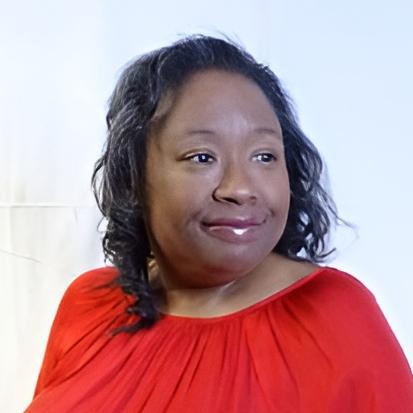
s
protagonists. She is fascinated by Greek, Ghanaian, and Celtic mythology.
The Sisterhood Trilogy is about hope, possibility, and empowered female characters that come together as a collective force to save the universe. Her novels also feature characters of colour, lacking in the genre of fantasy. The inspiration behind her books would be reading, travelling, and walking outdoors, experiencing nature to its fullest. Her books inspire and encourage people on their journeys and many of her readershavetoldherso.
All of her stories are important, as they all have important themes that can inspire and encourage people. For Alison, the power and magic of reading, libraries, would be the life narratives that played out in her book, Circle. Alison insists that the publishing journey was not easy, but entering a graduate school program opened up the doors, and led to the
publisher of The Sisterhood Trilogy.
Her favourite authors of all time are Toni Morrison, Maya Angelou, Alice Walker, J.K. Rowling, J.RR. Tolkien, C.S. Lewis, Lewis Carroll, Margaret Atwood, Margaret Laurence, Charles Dickens, William Shakespeare, the Bronte Sisters. She loves to read. At the moment, Alison is working on a historical fiction trilogy about Harriet E. Wilson: the first person of colour to publish a novel. She has recently beenawardedaWriter'sResidency in Champagne-Ardenne – in the North of France. Her books are at Audreys, and the West Side Chapters.
Alison, your journey has been so inspiring. Can you tell us how surviving Hodgkin's lymphoma shaped your decision to pursue writingasaprimaryartisticpath? Because of experiencing cancer twice, I discovered that life is too short. You have to follow your dreamsnow.
You've mentioned that books and

libraries were a refuge for you growingup.Whatweresomeofyour favourite books as a child, and how didtheyinfluenceyourwriting?
Some of my favourite books as a c h i l d w e r e B e d k n o b s a n d Broomsticks, The Wizard of Oz, the Nancy Drew Books, The Lion, The Witch and the Wardrobe, Ms Pickerel, but I was also compelled to read books that reflect the history and struggle of people of colour like Roll of Thunder, Hear MyCry.
Your novel, The Sisterhood, focuses on themes of friendship and teamwork. How did your personal experiences shape the narrative of thisyoungadultfantasyseries?
In my personal life, I have seen and experienced that collective force: people from various backgrounds have helped me not only on my artistic journey, but alsothejourneyoflife.
Overcoming cancer twice is an incredible feat. How did that health crisis impact your creative process and the themes you explore in your writing?
Battling cancer twice was difficult, harrowing, it was an experience, a journey I hope not to have experience again. I did not write at all during that experience, only when I came out the other side, when I had successfully beat the Hodgkin's lymphoma twice. It was as if my body was ready for the next phase of my life, a future I didn't know yet, but I knew that I had to keep going. As for it affecting, shaping the themes in my writing, I would say, there will always be an emphasis of people fighting, struggling against adversity to pursue a dream or goal. The struggles they have to
face, that will always be chronicled inmywriting,onewayortheother. After working in jobs you weren't passionate about, you decided to pursue writing. What advice would yougivetootherswhofeelstuckina similar situation but are hesitant to followtheirpassion?
Do not hesitate. Because the mental health, your happiness, or lack of, affects your physical health. In one way, or another, your unhappiness will have a negative impact, and when your life is out of balance, especially when you are unhappy, or despondent, it will manifest in illness. I thought staying where I was, the job I didn't like, was a safe choice. It wasn't. But, I learned something – to always go with your gut instinct, and to go for your dreams, no matter what other people tell you. For only you know whatisbestforyou.
Can you tell us more about how The Sisterhood came to be and the inspiration behind the characters, particularlythesorceress'daughter, andherdragon?
The novel, The Sisterhood, came from a dream, a beautiful waking dream. I think it was also inspired by a Sisterhood that I have always experienced, since I was a child. T h e A u n t s , a d o p t i v e , a n d biological, and some Uncles, as well as the cousins, they have been instrumental. I would also say the same about my circle of girlfriends, my partner, and other people who believed in what I wanted to do, the path I wanted to carve out as a literary and visual artist. I also have to mention my Mom. She is supportive.
Winning the Diversity Magazine Award for Writer of the Year and
B
.
accolades affect your career, and what did they mean to you personally?
It was a major achievement, as when a friend reminded me, not a lot of writers get recognition for their work. I did, and it continues to mean a lot. That people recognize and are following what I am doing. The work is not in vain. That is also anothervictoryforme.
I would also mention winning the 2020 Fil Fraser Award from the National Black Coalition of Canada also meant a lot. People are seeing whatIamdoing.Itisencouraging. You've transitioned from selfpublishing The Adventures of Eli the Elephant to having your novel The Sisterhood published by a traditional publisher. What has that journey been like, and what are the biggestlessonsyou'velearnedalong theway?
It was not easy, but going to graduate school, and becoming p a r t o f a l a r g e r l i t e r a r y community helped. That was the start for The Sisterhood Trilogy, and the connections I made there helped. Being published by a small press also opened doors, as the publisher was more open to different things, not so concerned aboutthetrendsinpublishing.
I have also made some lifelong friends along the way. That has also meant a lot to me. With publishing, you have to have perseverance, as opportunities to get novels published are not easy. With the landscape as it is now, with there being less midsize publishers, a significant number of small presses closing, and a lot of merging of the big ones at the top,

as now it is the Big Four, not the Big Five,itisverychallenging.
To publish any kind of novel, or non-fiction book, it is a battle. For poetry, it is even harder, but I have been lucky, as I was able to find a press for my poetry collection about Phillis Wheatley, the first person of colour to publish a book ofpoetry.
University of Calgary press has been good, and they believe in that book.Thatalsomeansalot.
You've been both a writer and an educator. How does teaching creative writing and visual arts influence your own work as an author?
I see how the Arts can inspire, be a spark to people. I see how the Arts, both literary and visual can open u p d o o r s , t o p e o p l e ' s imaginations, people's attitudes, their ways of being. I see how the Arts can be a portal to learning as wellasinspiration.
Many creatives face self-doubt at somepoint.Didyoueverexperience that, and if so, how did you overcomeit?
I think for me, it was a question of how do I get my work out in the world? Especially with The Sisterhood Trilogy, it was not easy, and with a small press, you have to be involved a lot in the marketing. With the University of Calgary press, there is more of a focus on PR, promotion, and so on. They really believed in the book, Phillis, and still do, and back all of their authors.
With your background in sociology andchildren'sliterature,doyoufind your academic experiences influencingthestoriesyoucreate?
I think with Sociology, and my

studies in that area, it showed me how societies can be organized, and how people behave according tothesesocietalstructures.
With Children's literature, it was more about how imagination can be a spark, a door to many differentthings.
The fight against cancer not only gave you a new perspective on life but also led to a successful literary path. What message do you hope readers take from your story of perseverance?
To not give up, and to go for your dreams.
Your work as an artist spans both visual and literary fields. How do these two forms of expression complement each other in your creativejourney?
They inspire each other – the visual inspires the literary, and the literaryinspiresthevisual.
Looking back at your journey – from overcoming cancer to achieving success as a writer – what is one piece of advice you would offer to youryoungerself?
To not give up, to not listen to others whose advice is not for you, and to be easy on yourself, anything you want to achieve takes time.
You've accomplished so much on your writing and artistic path so far. What are your future plans, both in terms of your writing projects and othercreativeendeavours?
I am focussing on my Harriet E. Wilson Trilogy, and also want to continue travelling, not only to promote the writing, but to travel, as usual, to be inspired as a human being,andtolearn.


Whenitcomestokeepinga
relationship exciting, passion is only one piece ofthepuzzle.
Communication is the essential ingredient that ties everything together, allowing couples to connect on a deeper level. Whether you're in a long-term relationship or just starting out, finding ways to spice things up requires both emotional and physical intimacy. Hot sex might grab the headlines, but without strong communication, the spark can quickly fade.
So, how do you blend hot sex with meaningful communication to ignite a fulfilling relationship? Let’s explore somewaystoenhancebothaspects.
1.TalkAboutYourDesires
Open and honest conversations about your sexual needs can be transformative. Many couples shy away from discussing their desires, either out of embarrassment or fear of being judged. However, bottling up feelings can lead to frustration and misunderstandings. By talking openly about what excites you in the bedroom, you create a space where both partners feel heard, understood, and empowered to explore new possibilities together.
2.CreateanAtmosphereforIntimacy Intimacy thrives when both partners feel comfortable and safe. Creating a space where you can freely express yourselves emotionally and physically is key to rekindling passion.
This could involve scheduling time for
deeper conversations, sending flirty texts during the day, or simply creating rituals that help you reconnect, such as regular date nights or spending timetogetherwithoutdistractions.
3.ExperimentandExplore
Routine can dull even the hottest passion, so don’t be afraid to introduce new things into your sex life. Whether it’s trying out a new position, role-playing, or exploring fantasies, spicing things up requires a willingness to step outside of your comfort zone The key here is to maintain open communication throughout the process check in with your partner, make sure they’re comfortable, and allow them the space to explore their own fantasies as well.
4.PhysicalTouchBeyondtheBedroom
While sex is important, don’t underestimate the power of nonsexual touch in keeping your relationship vibrant. Holding hands, cuddling, and even a spontaneous kiss can reignite passion in unexpected ways. These simple acts of affection foster a deeper emotional connection, making it easier to communicate openly and keepthephysicalpassionalive.
5.GiveEachOtherPermissiontoEvolve
Over time, your needs and desires may change, and that’s completely normal. Relationships evolve, and so do the people in them. The key is to adapt and grow together. Keep the linesofcommunicationopen,allowing your partner the freedom to express how they’re feeling without fear of rejection or shame. This continuous
dialogue will not only keep the relationship fresh but also allow you toenjoyamoresatisfyingsexlifeover thelongterm.
6.FindBalanceBetweenEmotionaland PhysicalIntimacy
One of the most powerful ways to spice up your relationship is to find harmony between emotional and physical intimacy. Having those deep conversations about life, goals, fears, and dreams can help you feel more connected and make the physical aspect of your relationship more fulfilling When both partners feel emotionally secure, it becomes easier to express and explore sexual desires.
7.UseHumorandPlayfulness
Laughter is a powerful aphrodisiac! Couples who laugh together tend to be more relaxed and less inhibited, making them more open to trying new things. Infuse playfulness into your relationship by flirting, teasing, and finding moments of lighthearted fun. Sometimes, being silly and breaking the tension can lead to some of the hottest moments in a relationship.
Conclusion
Maintaining passion in a relationship requires effort, creativity, and most importantly, communication. When couples learn to express their desires, listen to each other, and explore new dimensions of their intimacy, they create a lasting connection that goes beyond physical attraction. Hot sex is great, but when it’s paired with honest c o m m u n i c a t i o n , i t b e c o m e s something much deeper and more fulfilling.
Spicing up your relationship doesn’t have to be complicated. By fostering open communication, maintaining physical and emotional intimacy, and exploring each other’s desires, you can keep the passion alive and create a more rewarding relationship for bothofyou.
From poetry to fantasy, guide for new
immigrants and personal stories, these three authorssharedtheirexperiencesintheliterary spaceinapanelorganisedbyLCCMedia.
Yaa shares that growing up, there were not a lot of reading materials or books, but as she discovered books, she “wanted to see a picture of me at the back of a book” and be a “real author” like Agatha Christie. Yaa believed that her personal story could benefit others by learning from her challenges and background. She used poetry, drama and song to create poetry. Yaa has experience with selfpublishing. Since 2009, she has published about 13 books with four of them in her native language of her country, Ghana. Others include, her inspirational book about her journey and the others are children's books, even though, “I have a lot of poems that have appeared in most of my writing.” She wasn't concerned about making money, but she also realized that as a self-published author, there is the challengeofbeingthemarketer.
It wasn't possible to live on the income of her books, so she sold them at markets, cultural days and other functions where she could showcase her books During COVID-19, Yaa was in Ghana for eight months, so she sold her books to some of the schools and is now thrilled to know that they are “in the hands of kids” who will read them. She is excited about her latest book, “Fruit Habits.” Her advice to people who are aspiring to become authors or writers is to keep telling the stories of people from the past and there is always “room for everyone to write”, especially now with the internet because “there's a writer in everyone.”
Chidi's personal experiences were also the catalyst for his book. When he and his family came to Canada, “we thought it was going to be easy, but six months later… we haven't even found a job.” His book encompasses his experiences and then helping others by supporting new immigrants by working with immigration settlement agencies. He put that knowledge into the book by addressing the top ten challenges immigrants face when they come to Canada. From transitional jobs to navigating the systems, Chidi pinpoints resources, advice on parenting and cultural changes and addresses racism and even documents needed before arriving in Canada. Chidi's book was published in November of 2021 and he is presently working on his second book. This book is about financial literacy for teens. He sees the need for people to know about the “dangers of not knowing how to manage money.” In Canada, everyone seems to live on credit. The “cash and carry” concept is indoctrinated into our youth and the need to understand finances is important Chidi also reiterates the need to identify the nuances in communicationwithintheculture.
Alison also has many stories to share in her poetry and novels based on many cultures. She has been told that her words are very musical and she is transitioning back into fantasy and prose after working on historical fiction. Alison was born in England and raised in Canada, holding dual citizenship. Elements of her cultures are present in her writing. Her “Sisterhood Trilogy” combines many different places such as Ghana, Barbados, Jamaica, and even China and weaves her ancestral lines into herwriting.

Lorrie Morales
When it's fall or autumn, the leaves begin
to change, the air is crisper and the students and teachers are “back to school.” It's also the season of Thanksgiving. It we want to improve our quality of lie, it's easy to neglect thethingsthatmatter,butwhatifweshiftedourfocus tointentionalormeaningfulgratitude?
Gratitude is different from thankfulness, in that this positive attitude is intentional and present in our everyday lives. We notice the sun on our face, how healthy our bodies feel (or don't), the smile of a child and emptiness from the loss of a loved one relieved of pain. We get to choose the possibilities of living and not focus on all the limitations we face or challenges weencounter.
In many cultures, gratitude is valued. Research has proven, over and over again, that gratitude improves one's sense of well-being. In a 2005 study, researchers found that five exercises administered over a week had immediate impact. Two of those exercises focused on gratitude. At the sixth-month post-test, they found that the greatest impact of all five was gratitude Scientifically, individually and emotionally, the subjects demonstrated the vital componentofgratitude.
Whether it be reflections of the past, not taking life for granted in the present or even maintaining a hopeful attitude for the future, these are all levels or varieties of gratitude. But, what can one do to develop that mindset? There are countless possibilities by
followingsimplepractices.
First of all, writing a gratitude letter is one method to reflect on a person who had a positive influence on you and the impact it had on your life. Writing those thoughts in a letter to them and actually mailing or sharing with them directly is energizing to both parties. Develop a morning routine of writing in a gratitudejournalisanothermethod.
Secondly, start your day with intentional breaths and letting your body and senses be experienced. Going for a walk, praying, meditating, breath work, sharing an experience, listening to music, getting out into nature are other ways to anchor our unique bodies. Noticing or savoring the “awe-moments” are those experiences we seldom take time for. Enjoy them. Sharethem.Recallthem.
Lastly, view your life as a jar of marbles where you invest by putting more in than taking them out. When you have a balance of sleep, work and leisure time, you are not as stressed Keeping positive relationships, aiming for a purpose or focus or even being passionate about something, enables us to see theshortageorexcessincertainareasofourlives.
So, take a breath, grab a pen, put your hand on your heart and recognize that regardless of how much gratitude we are able to show or feel, it's the quality of life that we can practice day to day and improve our gratitude practices. Take the risks, be thankful for the successes, but also increase your gratitude for your well-being.


2 tbs olive oil or 1 tbs butter
1 onion (diced)
2 celery stalks (diced)
2 cloves of garlic (minced)
Peppers (1 chili, jalapeño)
28 oz can diced tomatoes
3 cups fish or chicken stock
3 tbs tomato paste
1 lemon – squeezed juice
1 tsp smoked paprika and cumin and thyme leaves
¼ cup parsley (minced)
1 lb of boneless, skinless fish
(cod, halibut) cut into cubes
½ lb – shrimp or prawns (peeled and deveined)

In a pot, heat the oil, adding onion and celery, garlic and chilis. Simmer for 1-3 minutes. Add tomatoes, stock, paste, lemon juice and seasonings and bring to a gentle boil. Cover and simmer for 10 minutes. Add fish and continue simmering for 5 -7 minutes. Remove from heat. Add any other seasonings for taste as well as sprinkle parsley on top. Ladle into bowls and serve with bread.
Cook 500g of ripe pears until tender. Melt 200g of 70% dark chocolate. Blend together into a smooth mixture. Pour into a mold and chill in fridge for 4-5 hours. Take out and enjoy!
